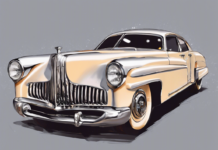The Head studs on your car are one of the silliest things to have. They are not needed, they are barely used, and they are simply taking up space. Here’s why it’s time to start phasing them out.
Last month I went in for an oil change and while the mechanic was doing his thing, I noticed that he had taken off my head studs without incident or any help from me because he didn’t need me to pull my car engine or anything like that. Now you might be wondering what these “head studs” even do in the first place… but I’ll tell you right now they are not much of anything.
They don’t secure your engine to the suspension. They don’t retain any integrity when tightening up the engine in relation to the transmission, and they don’t even keep your engine in its proper place in relation to the frame itself. Head studs literally do nothing but hold you car together in space, and do absolutely no advantage or protection for you or your car.
The only place that these “head studs” are probably used is when you’re replacing your head gasket.
And they are definitely not needed. They are simply an archaic product that was once popular, but is now honestly obsolete. I know you might be thinking right now that “bumper to bumper” replacements for head studs can get extremely expensive… and in most cases, yes… but you’d be surprised at what’s available with modern drivetrain engineering and how much of a difference these really can make in terms of safety and durability over the old style head studs.
Let’s take a look at some of the new head stud alternatives that are up for grabs.
1. M12x1.5-16 (or whatever metric equivalent is used in your area) Drive Studs
This is the modern (2004 and up) standard for all cars’ factory-style head studs. You know the ones that are almost identical to the ones that are on your car right now. They are strong, they are secure, and they are long-lasting for all suspension components.
2. M14x1.5-16 (or whatever metric equivalent is used in your area) Drive Studs
This is another modern (2004 and up) standard for all cars’ factory-style head studs. These drive studs are stronger than the ones before them, however, they still exist in relation to these newer drive studs. It’s simply not necessary to use the older M12x1.5-16 (or whatever metric equivalent is used in your area) Drive Studs.
3. M12x1.0-10 Drive Studs
Now this one here is probably the least common of all of them, but it is most certainly the strongest and most reliable out of all of them. These drive studs are an absolute necessity in replacing the archaic M12x1.5-16 (or whatever metric equivalent is used in your area) Drive Studs and for keeping your engine secure in its place when it comes to transferring power from the engine itself to the wheels; or any sort of suspension components you might have on it such as shocks, struts, springs, etc…
4. M14x1.0-10 Drive Studs
These are another alternative to replacing the now obsolete M12x1.5-16 (or whatever metric equivalent is used in your area) Drive Studs, but these also make it possible to use them for larger vehicles. These are much needed when you’re building vehicles that aren’t typically driven like cars, like for example… tractors… or even boats!
5. Stamped Clevite Head Studs (or Clevite Head Bolts)
This is not just an option for replacing the archaic M12x1.5-16 (or whatever metric equivalent is used in your area) Drive Studs because this is actually for replacing the entire head on your vehicle.
Yes, these are not just for replacing or upgrading the engines of your vehicles, but also for replacing the entire assembly bodyshell body itself. These are “head studs” through and through, but they are also called “Clevite Head Bolts”. If you think about it though…








